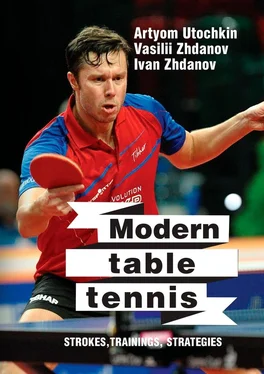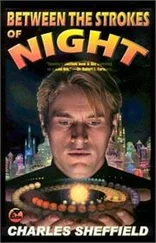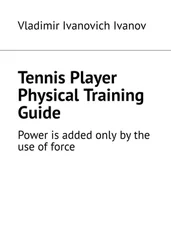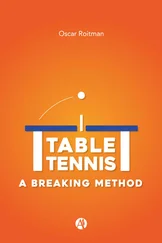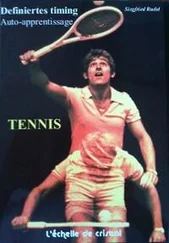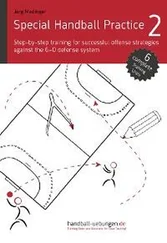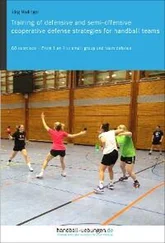We’ll open a secret that you can significantly raise your game level. The fact is that the number of errors, committed by athletes in the game with the second forehand loop is considerably higher than in the third and subsequent top-spins.
This nuance is usually under the radar. And many athletes don’t even realize why they are quite often mistaken exactly in the second step.
Those who begin to take this nuance into account, immediately increase the stability of the second top-spin and, as a result, its overall level.
Perhaps you have a question: “Is this nuance can be seen when viewing the games featuring table tennis stars?”. A reasonable question and the answer is this. It seems there’s no visual difference between top-spin against the simple block and chopped top-spin against a block. The difference is in the first touch.And the first touch does not usually stand out.
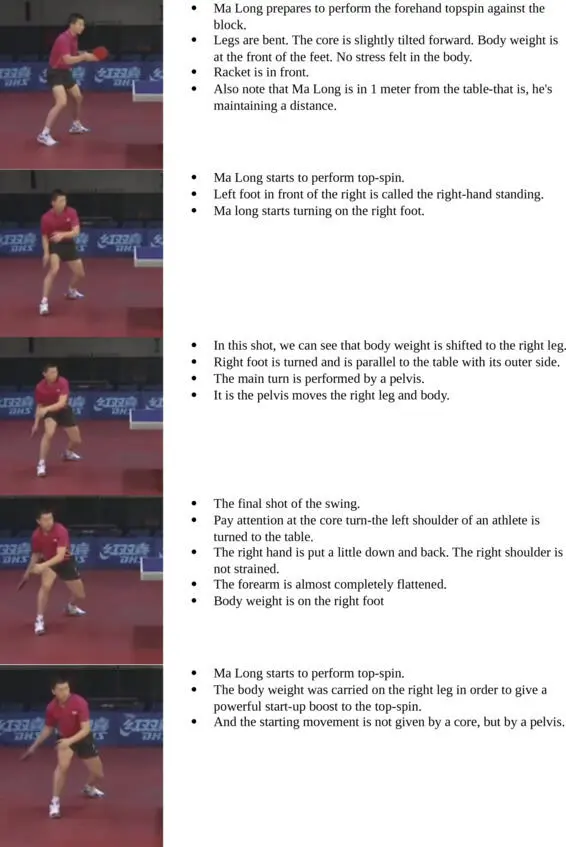
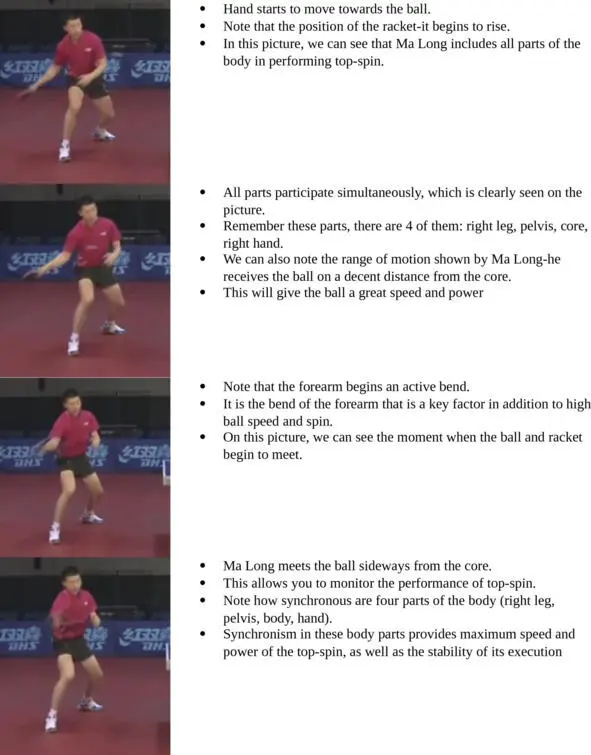
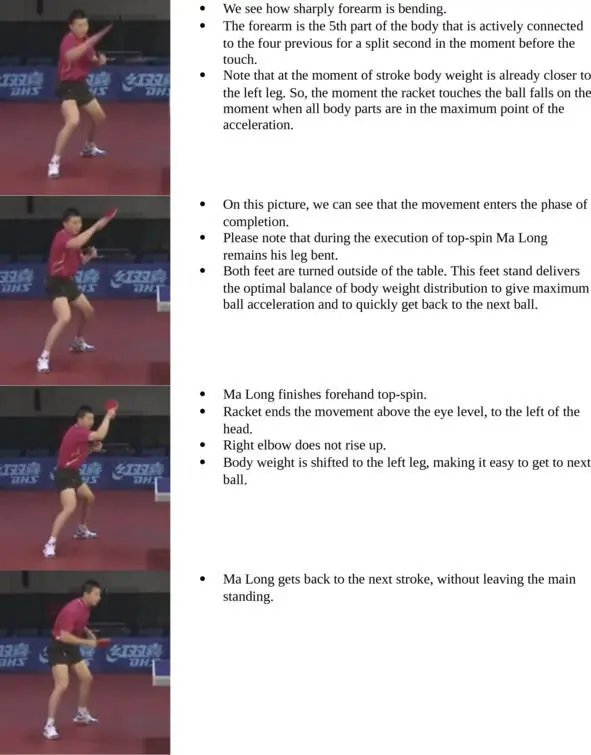
Variation #2. Powerful forehand top-spin
Powerful forehand top-spin is used to complete or intensify an attack. Of course, it is used much less often than the forehand top-spin against the block, since it requires such situation when its performing is possible and appropriate.
What is the situation? The interesting thing is that for each athlete there are “personal” suitable moments. One performs a powerful forehand top-spin only on balls, raised slightly higher than normally, and the other can perform it right after the first chopped top-spin. And someone generally has the ability and skill to perform top-spin to win points immediately after a serve. It all depends on the explosive qualities, ball sense, general abilities, habits and athletes game models.
Let’s now see the difference between the powerful forehand topspin and the “simple” forehand topspin against the block. It is different in three components:
– Legs position.
– Amplitude.
– The speed of racket passing through the ball.
Legs position ata powerful top-spin is much wider. This position provides great stability for the top-spin and provides the possibility to add a second component – amplitude.
The movement amplitudebecomes greater. Moreover, the broader movement is performed by the arm, legs and pelvis. It all starts with a wider swing and ends with with a deeper finish. All this together, provides more kinetic energy and, consequently, more targeting for the ball flight.
The speed of racket passing through the ballis 1.5 – 2 times higher. Everything is clear here – the higher the speed of racket passing through the ball, the higher the speed of flight.
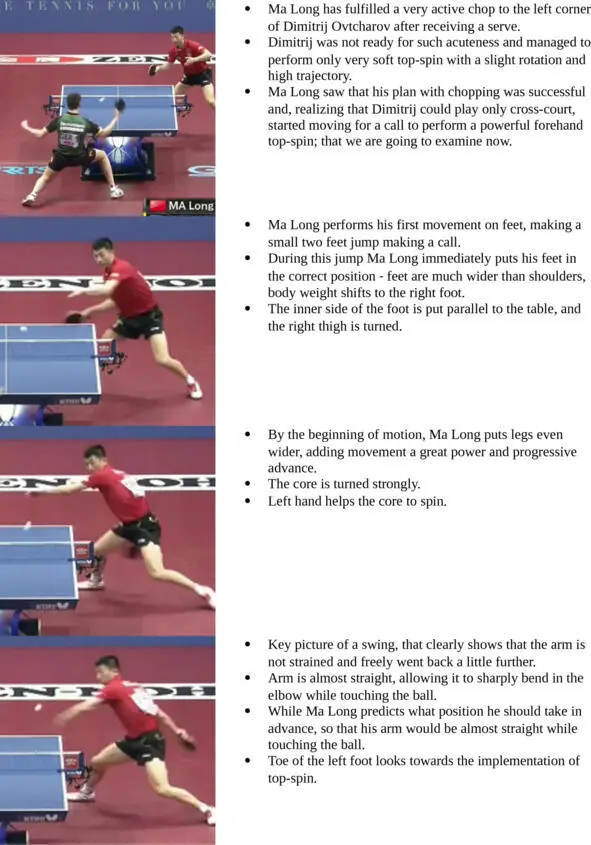

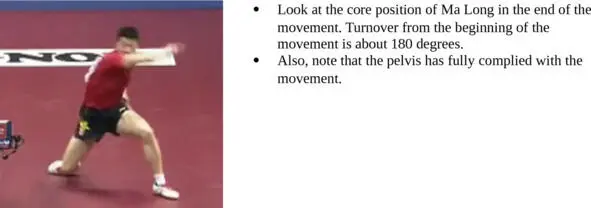
Once again we draw your attention to the simultaneous inclusion of the four parts of the body at the powerful forehand top-spin (right leg, pelvis, core, right hand), which is mentioned in the comments to the pictures, becomes the determining factor. At the slightest non-sync of these parts of the body a powerful forehand top-spin is impossible.
It should be noted that simultaneous inclusion of the four parts of the body is important in all variations of top-spin. Without exception. Well remember these parts:
– Right leg.
– Pelvis.
– Core.
– Right hand.
Variation #3. Chopped forehand top-spin
Chopped forehand top-spin is a variation that is learned after mastering the forehand topspin/loop against the block. It is learned as a second element because it is more difficult to perform.
Mastering of this variation is critical to the level of playing table tennis. Not owning this variation at all (or enough), it is impossible to achieve any result.
80% of attacks begins with this element in the table
tennis. Mastering (or not) this top-spin variation largely determines the ability of the athlete to play at some level.
Forehand chop is different from the forehand loop against the block by four main criteria:
– Swing.
– The movement width.
– Racket tilt.
– The direction of movement.
During the backswing,the racket is lowered much below to create a large amplitude of movement necessary to give the ball a good spin at the lower spin of the opponent.
And the hand with the racket not just falls below, this happens due to the right leg being more bent, a bigger turn of the pelvis and the greater extension of the arms at the elbow.
Together, all this provides a greater width of the movement, which is necessary to perform a complete chopped top-spin.
The movement is broader because at the top-spin from the block we are dealing with a ball that is spinning in a direction that is convenient for us. The speed of its flight contributes to our top-spin speed. Roughly speaking, the faster the ball flies off the block, the more speed our top-spin has. The whole block speed is converted during our top-spin.
With a chopped top-spin the ball spins in the other direction, and we need to cut off its rotation, and add its own rotation.
In other words, the chopped forehand top-spin requires significantly more effort than top-spin against the block. The wider movement is necessary to ensure this effort.
The tilt of the racketat the chopped top-spin is more open. Because if we play the ball with the same tilt of rackets, as in case of the top-spin against the block, the ball would get into a net with a great probability. It would lack enough trajectory to fly over the net. And trajectory reserve is attached to a ball due to a good rotation.
Movement directionat the chopped top-spin is different from top-spin against the block significantly due to the greater thrust up.
Here works the same principle as with the tilting of the racket. I.e. if you send motion too forward, the ball most likely would get into the net.
The end of the movement is also slightly higher. The higher the position of the racket is provided by the previous components: width and direction, more open racket tilt.
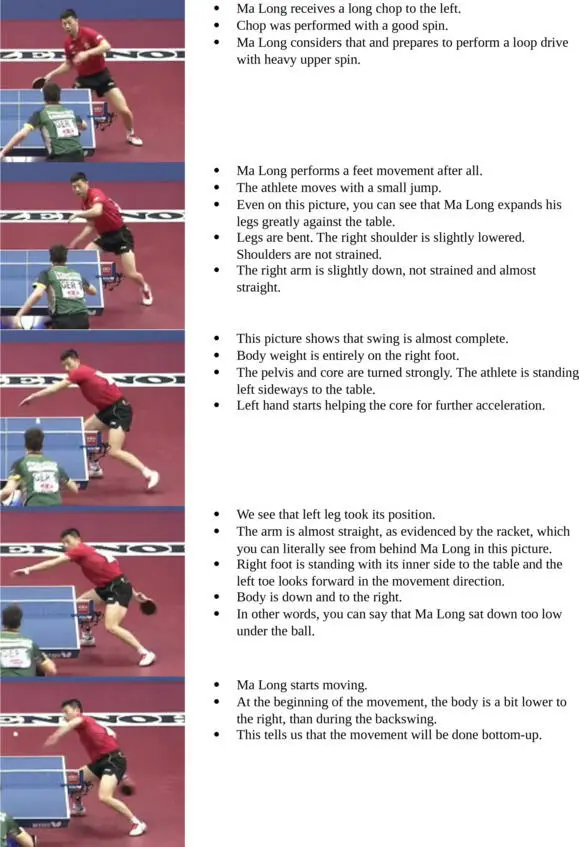
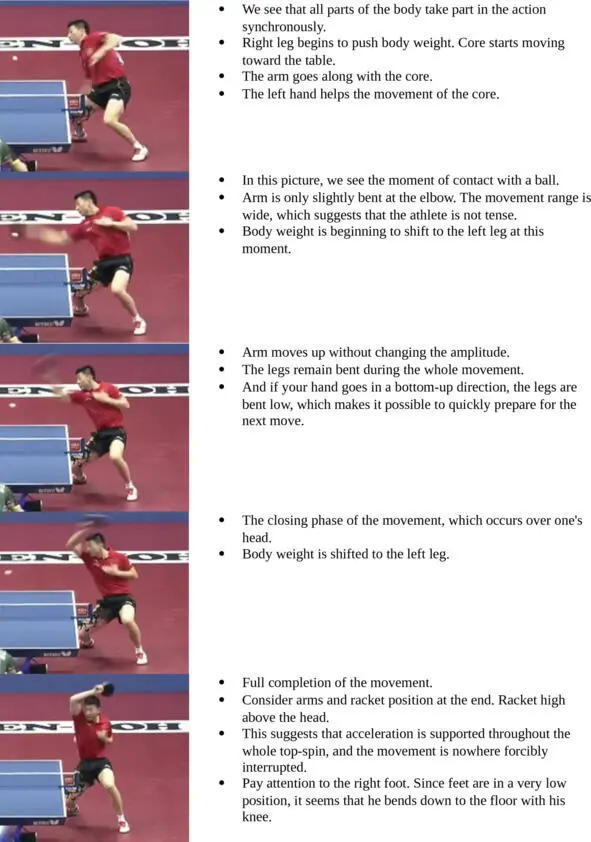
Variation #4. Counter-loop from the middle zone
Counter-loop from the middle zone is called “over-rotation” or “overspin” among the tennis players.
Читать дальше
